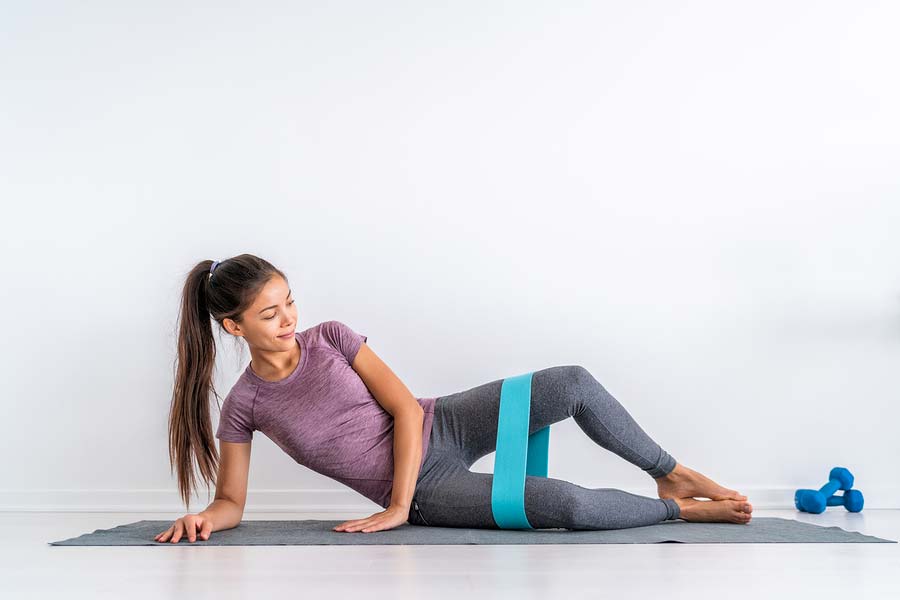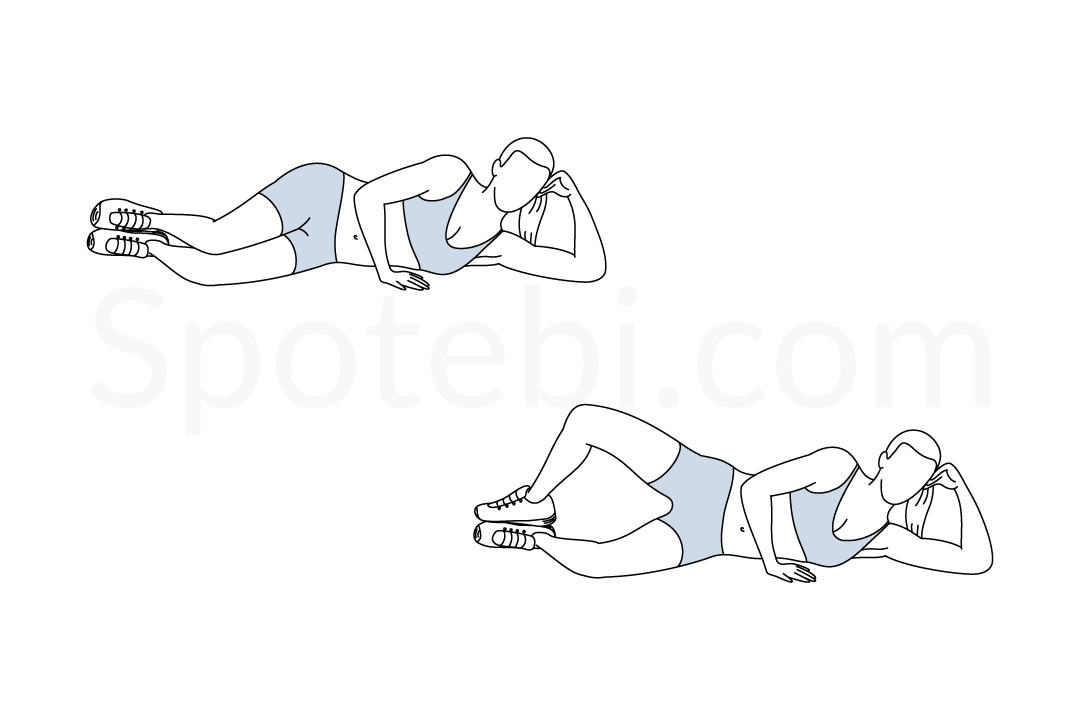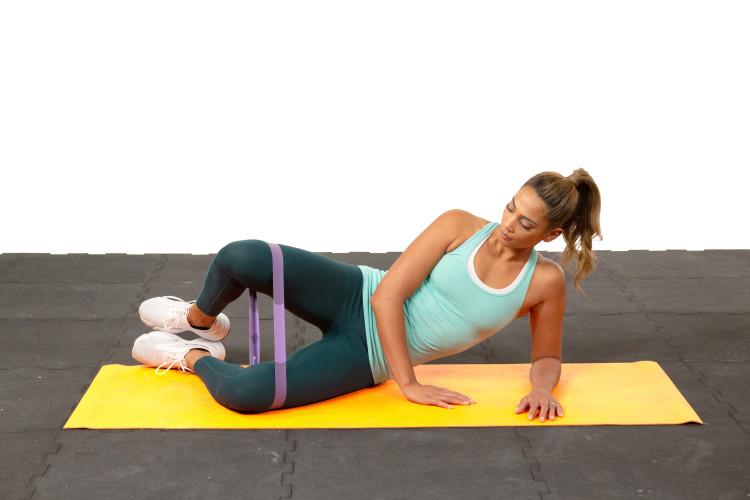In today’s fast-paced world, staying informed about health and wellness trends is essential. One such trend that has gained popularity among fitness enthusiasts and physical therapists alike is the clamshell exercise. This low-impact movement targets key muscles in the lower body, offering a range of benefits from improved posture to injury prevention. In this article, we’ll explore what the clamshell exercise is, how to perform it correctly, and why it’s becoming a go-to move for many.
Understanding the Clamshell Exercise
The clamshell exercise is a simple yet highly effective movement designed to strengthen the hip abductor muscles, particularly the gluteus medius. Named for its resemblance to the opening and closing of a clam’s shell, this exercise can be performed in various positions—lying on your side, standing, or even sitting. The primary action involves lifting the top knee while keeping the bottom leg stationary, engaging the glutes and hips in the process.
This non-weight-bearing exercise is ideal for individuals looking to improve hip stability, enhance lower body strength, and prevent injuries. It’s often used in physical therapy and rehabilitation programs due to its ability to target specific muscle groups without placing excessive strain on the joints.
Muscles Worked by the Clamshell

The clamshell exercise primarily targets the gluteus medius and gluteus minimus, which are crucial for hip abduction and external rotation. These muscles play a vital role in maintaining balance and proper alignment during movement. Additionally, the exercise engages the gluteus maximus, hip flexors, tensor fasciae latae, and piriformis, making it a comprehensive workout for the hip region.
By strengthening these muscles, the clamshell helps improve overall lower body mechanics, reduce the risk of injury, and enhance performance in activities such as running, squatting, and jumping.
Benefits of the Clamshell Exercise

-
Strengthen Hip Abductors:
The primary benefit of the clamshell is its ability to strengthen the hip abductors, which are essential for maintaining balance and proper alignment during movement. Strong hip abductors help prevent issues like anterior pelvic tilt and knee valgus (knees collapsing inward). -
Improve Hip Mobility:
By encouraging a full range of motion in the hip joint, the clamshell helps increase flexibility and reduce stiffness. This is especially beneficial for individuals with tight hips or those recovering from injuries. -
Enhance Posture and Alignment:
Weak hip abductors often contribute to poor posture and alignment issues. Strengthening these muscles through clamshells can correct imbalances, reduce discomfort, and prevent long-term problems like lower back pain or knee injuries. -
Support Functional Movements:
The hip abductors are essential for daily activities such as walking, running, and climbing stairs. Strengthening them with clamshells improves lower body stability and reduces the risk of injury during dynamic movements. -
Boost Glute Activation:
Many people struggle with underactive glutes, which can lead to imbalances and improper movement patterns. Clamshells help activate the gluteus medius and minimus, leading to stronger, more toned glutes. -
Low-Impact Exercise:
Unlike high-impact exercises that place stress on the knees, hips, and ankles, clamshells provide a gentle yet effective way to strengthen the muscles around the joints. This makes it an ideal option for individuals with joint pain or mobility limitations. -
Easy to Modify:
The clamshell is highly versatile and can be adapted to suit different fitness levels. Beginners can perform it without equipment, while advanced individuals can add resistance bands or ankle weights to increase difficulty. -
Improve Balance and Stability:
Strong hip abductors are essential for maintaining balance, especially during single-leg movements. Clamshells help improve coordination and control, reducing the risk of falls and enhancing athletic performance. -
Prevent and Rehabilitate Injuries:
Weak hip abductors can contribute to conditions like IT band syndrome, patellofemoral pain syndrome, and lower back pain. Incorporating clamshells into a routine can help prevent these issues and support recovery in rehabilitation programs. -
Versatile and Convenient:
Clamshells can be performed virtually anywhere—at home, in the gym, or even while traveling. They require minimal equipment, making them a convenient addition to any fitness routine.
How to Perform Clamshells Correctly

To get the most out of the clamshell exercise and avoid injury, it’s important to focus on proper form. Here’s a step-by-step guide:
Starting Position:
- Lie on your side with your legs bent at a 90-degree angle.
- Stack your hips, knees, and ankles on top of each other.
- Rest your head on your bottom arm or a pillow for support.
Engage Your Core:
- Activate your core muscles to stabilize your pelvis and maintain a neutral spine throughout the movement.
Lift Your Top Knee:
- While keeping your feet together, slowly lift your top knee away from the bottom knee in a controlled motion.
- Imagine opening and closing a clamshell.
Pause:
- Hold the position at the top for a moment, ensuring you don’t rotate your pelvis or lose alignment.
Lower Slowly:
- Gently lower your top knee back to the starting position, maintaining control and alignment.
Repeat:
- Complete the desired number of repetitions on one side before switching to the other.
Progression Tips

To make the clamshell more challenging, consider the following modifications:
- Add Resistance Bands: Place a looped band around your thighs to increase resistance.
- Use Ankle Weights: Add weights to your ankles for extra difficulty.
- Increase Range of Motion: Gradually work on lifting your knee higher while maintaining proper form.
Start with a resistance level that matches your fitness level and gradually increase as you become stronger.
Conclusion
The clamshell exercise is a simple yet powerful tool for improving hip mobility, posture, and lower body strength. Whether you’re a beginner or an experienced athlete, this exercise offers a wide range of benefits and can be easily modified to suit your needs. By incorporating clamshells into your routine, you can enjoy improved balance, stability, and injury prevention.
If you’re looking to enhance your fitness journey, consider adding clamshells to your workouts. With the right form and progression, this exercise can help you achieve a stronger, more balanced lower body.
Author Section
Author: Sarah Thompson
Title/Role: Fitness and Wellness Writer
Credentials: Sarah is a certified personal trainer with over 10 years of experience in the fitness industry. She specializes in creating accessible and effective workout routines for all fitness levels.
Profile Link: Sarah Thompson Profile
Trust & Credibility
For more information on the clamshell exercise and its benefits, refer to the following trusted sources:
- Hinge Health – Clamshell Exercise
- Physical Therapy Today – Hip Abductor Strength
- American Council on Exercise – Low-Impact Exercises
Call to Action
Stay updated with the latest news and trends in US trending news by exploring our comprehensive guides and expert insights. Whether you’re interested in fitness, health, or wellness, we’ve got the information you need to stay informed and empowered.











More Stories
What Is Yodo Para Tiroides and How Does It Affect Thyroid Health?
How to Claim Your Joy in League of Legends: A Step-by-Step Guide
What is WSET? A Comprehensive Guide to Wine Education